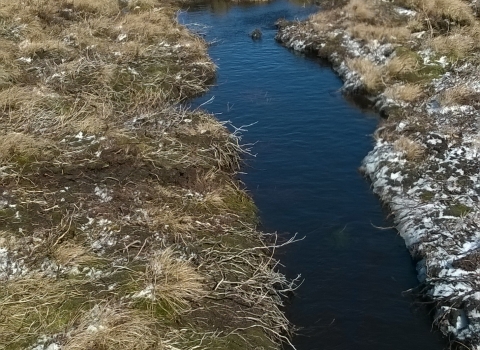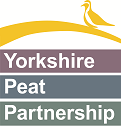Yorkshire Peat Partnership has a long history of working with a range of local and national contractors to deliver capital works. Special machinery is used, such as low ground pressure diggers with a smaller pressure per cm2 than a human foot.

Grip blocking © Matt Cross
Grip blocking
Grips are channels that were cut into peatlands in an attempt to drain them for agriculture. A key target of this project is to restore the hydrology to that found in actively peat-forming blanket bogs. A range of materials are used to block these grips depending on the grip type.Over 1,800 kilometres of grips and gullies have been blocked by Yorkshire Peat Partnership so far (more than distance from Skipton to St Tropez).
Reprofiling in progress © Tessa Levens
Reprofiling
Grazing, draining and burning on peatlands can lead to steep erosion features on exposed peat. The steeper the angle of an erosion feature, the faster it erodes. Yorkshire Peat Partnership works to make these angles shallower and apply a range of supporting materials to limit further erosion.
Revegetating © Rosie Snowden
Revegetating
Areas of bare peat are vulnerable to further erosion, oxidisation and release of greenhouse gases. It is vital to revegetate these areas to reduce further damage to peatlands. Yorkshire Peat Partnership does this through a range of methods such as applying a mulch of heather brash, planting cotton grass and sphagnum moss plugs.
Hear more about peatlands and our work on our bogcasts page.
